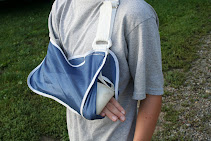On Tuesday, a big rig truck and nineteen vehicles collided on a freeway in the mountains of Los Angeles. The accident left at least fifteen people with minor injuries and two in critical condition.
Television news video footages taken on the incident showed more than one and a half dozen cars, SUVs, pick-up trucks, and a big-rig truck piled up on top of each other in a bunch of wreckage.
According to reports, the said multiple-vehicle accident occurred at around 9:45 in the morning at the southbound side of California Route 14 in Agua Dulce. Said route is commonly known as the Antelope Valley Freeway where cars bound for Los Angeles basin from the high desert bedroom communities often speed up.
The California Highway Patrol said that all southbound lanes and two northbound lanes were closed and re-opened at around 2:08 in the afternoon the same day.
The Los Angeles County Fire Department Captain, Mark Savage, said that fortunately for the people involved in the vehicle pile-up, there was neither fire nor hazardous material spill at the accident scene.
At least one person was trapped in the wreckage; firefighters were able to free that person immediately using Jaws of Life. A group of ambulance also responded to the scene and transported the injured victims to hospitals. Savage further said that most of the injuries sustained by the victims were minor expect for the two who were listed in critical condition.
At present, the major cause of the accident was not yet determined, but the investigation is still under way.
Such vehicle pileup accidents are common in mountain areas, which are both elevated and densely-populated with a lot of vehicles passing by. In California where vehicle pileups frequently occur, many victims suffer from different injuries ranging from minor to severe, and in worst cases, death.
This type of car accident encourages personal injury lawyers to extend their legal assistance to the victims who are in need of help. According to a Los Angeles motorcycle lawyer, in most lawyers’ countless experiences in defending victims of vehicle accidents and their families, they were able to gain a good reputation in providing clients the best legal assistance they deserve.
Television news video footages taken on the incident showed more than one and a half dozen cars, SUVs, pick-up trucks, and a big-rig truck piled up on top of each other in a bunch of wreckage.
According to reports, the said multiple-vehicle accident occurred at around 9:45 in the morning at the southbound side of California Route 14 in Agua Dulce. Said route is commonly known as the Antelope Valley Freeway where cars bound for Los Angeles basin from the high desert bedroom communities often speed up.
The California Highway Patrol said that all southbound lanes and two northbound lanes were closed and re-opened at around 2:08 in the afternoon the same day.
The Los Angeles County Fire Department Captain, Mark Savage, said that fortunately for the people involved in the vehicle pile-up, there was neither fire nor hazardous material spill at the accident scene.
At least one person was trapped in the wreckage; firefighters were able to free that person immediately using Jaws of Life. A group of ambulance also responded to the scene and transported the injured victims to hospitals. Savage further said that most of the injuries sustained by the victims were minor expect for the two who were listed in critical condition.
At present, the major cause of the accident was not yet determined, but the investigation is still under way.
Such vehicle pileup accidents are common in mountain areas, which are both elevated and densely-populated with a lot of vehicles passing by. In California where vehicle pileups frequently occur, many victims suffer from different injuries ranging from minor to severe, and in worst cases, death.
This type of car accident encourages personal injury lawyers to extend their legal assistance to the victims who are in need of help. According to a Los Angeles motorcycle lawyer, in most lawyers’ countless experiences in defending victims of vehicle accidents and their families, they were able to gain a good reputation in providing clients the best legal assistance they deserve.










